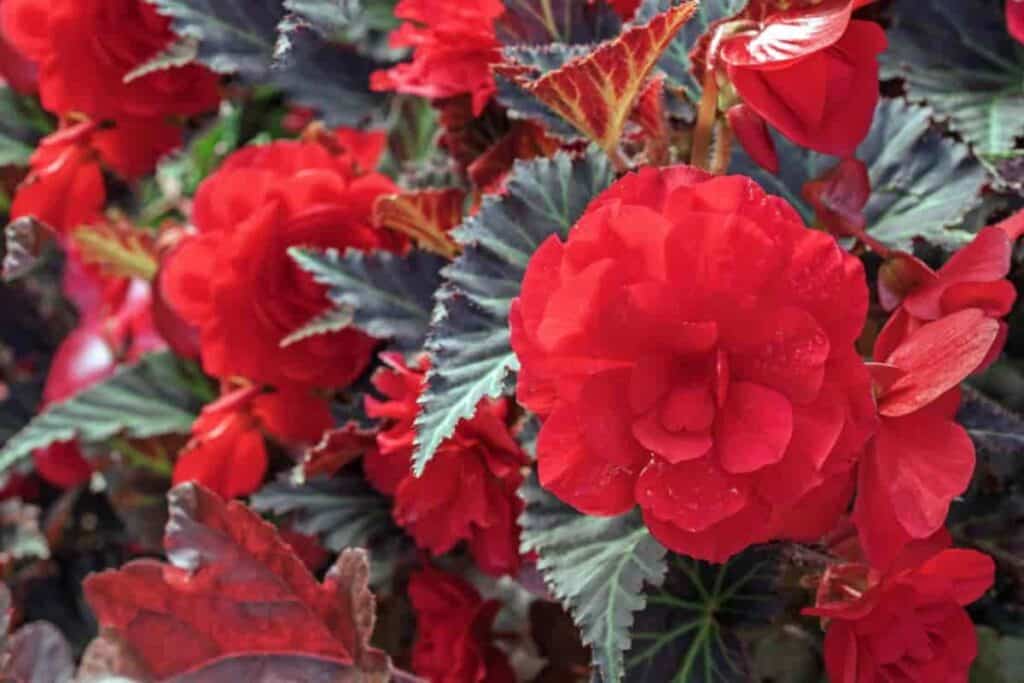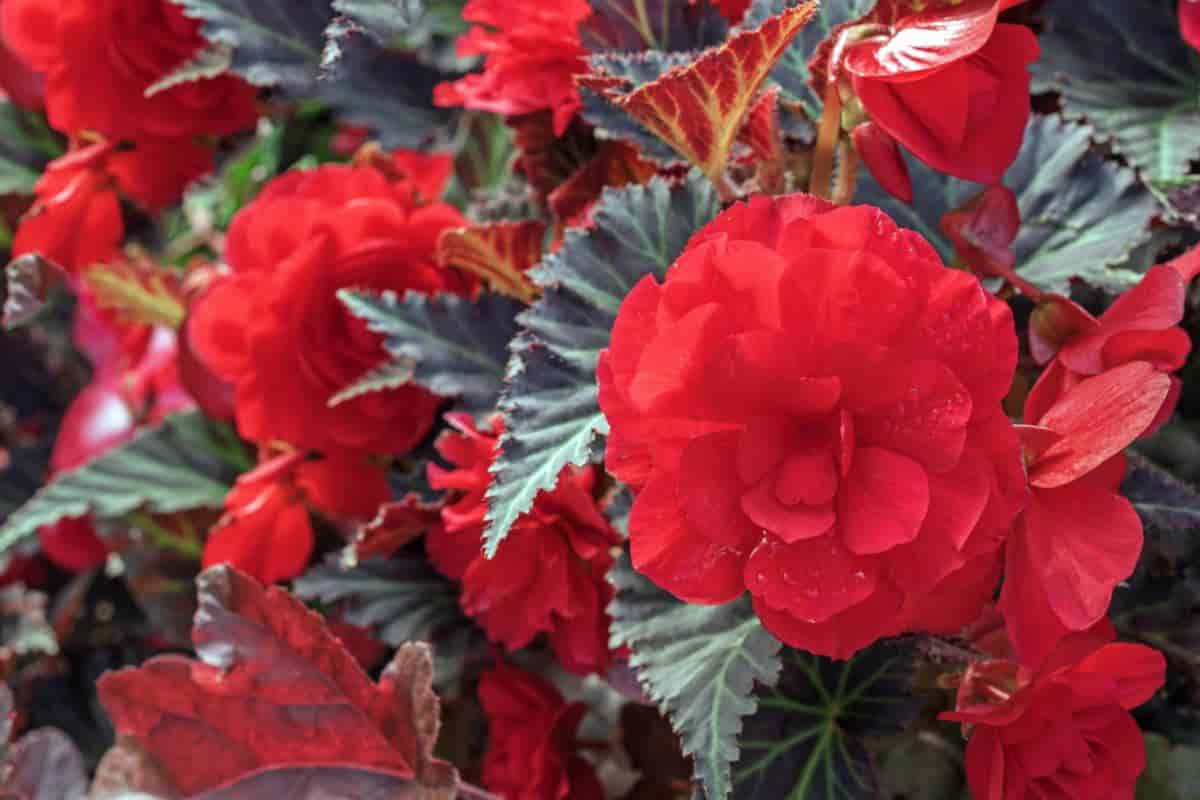With its crisp petals of delicate texture and elegant form, one gorgeous flower, the tuberous begonia, brings half the color wheel to life in your garden.
Any backyard gardener can grow these begonias, for they require only simple care. In our garden, for the little attention we give our plants, we are rewarded with exquisite beauty from late June to early November.

Our entrance porch and patio are aglow with color. In the lath-house and small greenhouse constructed by my husband, the exhibition is lasting and never fails to bring forth an exclamation of “Ah!” from the visitor. The returns for only spare-time care are indeed magnificent.
Tuberous begonias, luxuriant in foliage, kaleidoscopic in color, delicate in blossom texture, truly put on a one-flower show.
Colors range from purest white to darkest red, and forms are numberless, many imitating nature’s finest flowers, the rose, carnation, and camellia.
Start Tubers Early Spring
We start our tubers early in the spring, as soon as the danger of frost is past. Because our garden is flanked by giant eucalyptus and studded with tall pines whose roots are greedy for moisture, and moisture is something to be cherished during California summers, we prefer to grow our begonias in pots rather than in beds.
We use 10” inch pots for begonias, are heavy feeders, and need room for bulb growth. To provide good drainage, always necessary, we place about an inch of gravel in the bottom of the pot before filling it with the soil mixture.
In California, we use oak leaf mold or chaparral leaf mold, which we bring home from nearby mountains or canyons.
We use pure leaf mold, not too finely screened, although some growers prefer to have one-third part sand or sandy loam in their soil mixture.
With the lower half of the potting material, we mix a tablespoon of fish meal, bone meal, or blood meal.
Then we fill the pot with leaf mold to within a ½” inch of the top and bury the tuber about ½” an inch below the surface. After planting, we water thoroughly.
Later on, watering must only be enough to keep the soil damp. Frequent light waterings are more effective than heavy watering.
After the plants are well started, they will consume more moisture and must be watered relatively often.
A teaspoonful of plant food may be added to the surface of the soil mixture after the plant has grown for 30 days.
Free From Diseases
Begonias are almost free from all diseases. Their likes are filtered shade, lack of wind, and surrounding moisture. Their deadliest enemies are direct sunlight and dry soil.
Luxuriant growth and plentiful blooms tend to make them top-heavy, and we find it wise to support the stalks with stakes, tying them loosely with plastic-coated bands that will not cut the stems. These are available at most garden shops.
As with all other flowers, your expectations can equal the plant material with which you start. However, that does not mean that a tremendous outlay for choice tubers is necessary.
All our present tubers were purchased as seedlings from one of the best growers on the Pacific Coast for the modest price and potted in June with the same soil mixture we use for tubers.
Out of 50 plants, only four failed to produce blooms that brought pride to our hearts. Many plants may well develop into prize-winning specimens to be cherished for several years.
Begonias In Cold Weather
As cold weather approaches in the fall, watering should be decreased. When leaves and stalks have withered, the soil should be allowed to dry out. Then, the tubers should be stored for the winter, away from freezing temperatures and moisture.
In our temperate climate, the storage problem is simple. We turn the pots on their sides and allow the tubers to rest undisturbed until spring.
Spring never comes soon enough, even in California. Throughout the winter, we can hardly wait for that early weekend in March when we can get our fingers into potting soil and once more watch a rainbow unfurl in our garden.
44659 by Marjorie Gunnerson
